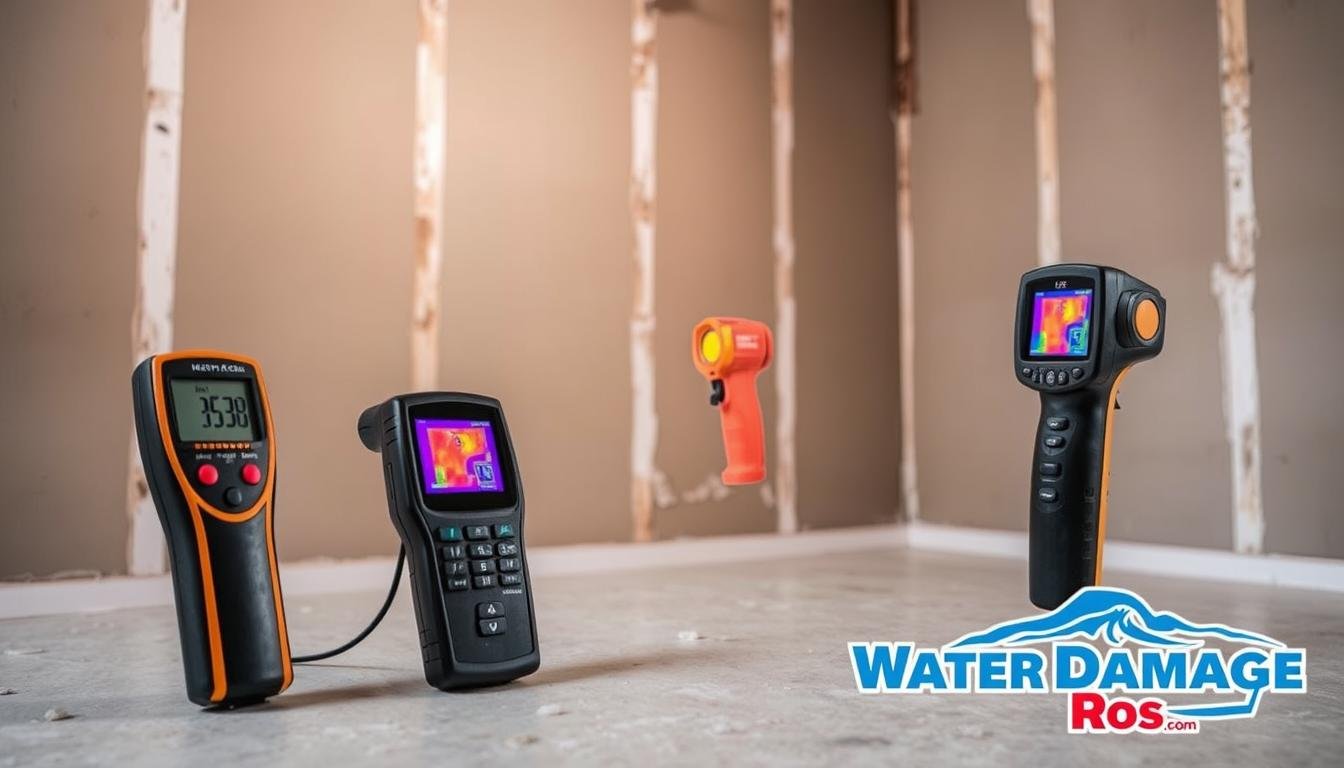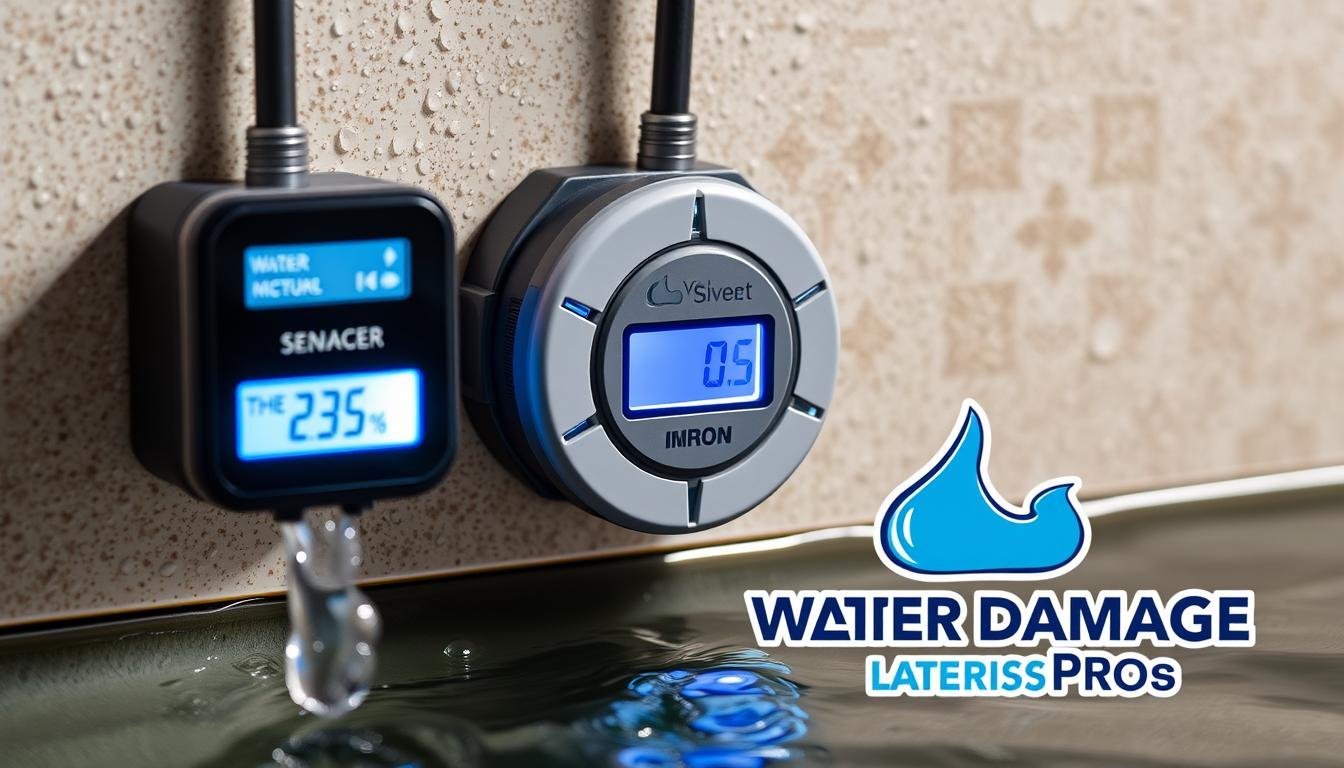How to Detect Hidden Water Damage Behind Walls: Pro Tips
Hidden water damage can cause big problems, like mold and structural issues. In fact, many homes have hidden water damage that people don’t know about. This is why getting a professional to check is so important. Common causes include roof damage, leaks, floods, high humidity, and foundation cracks1. Many homeowners forget to check their attics for water damage. But, it’s a key place to look. You might find signs like discolored or warped rafters, wet insulation, mold, and moisture1. It’s a good idea to get a professional to inspect before buying a home1. Key Takeaways Hidden water damage can lead to mold, structural issues, and health problems if left unaddressed. Regularly inspect your attic and look for signs of water damage, such as discolored or warped wood, wet insulation, and moisture buildup. Utilize moisture meters, hygrometers, and visual inspections to detect hidden water damage early. Address water damage issues promptly to prevent further deterioration and maintain your home’s value. Consider hiring a professional inspector to identify any hidden leaks or water damage before purchasing a home. Signs to Look for When Detecting Hidden Water Damage Visible Signs One clear sign of hidden water damage is bubbling paint under or around peeling paint. This shows water buildup behind the paint. Warping in door casings or walls is another sign, as water can warp materials2. Also, softened drywall means moisture has gotten in, making the drywall mushy2. Discoloration, peeling paint or wallpaper, and water stains on walls or ceilings are signs too3. Odors and Utility Bills A musty odor often means there’s hidden water damage and mold growth23. An unexpected increase in a home’s water bill is another warning sign. It could mean there’s a hidden leak behind the walls2. “Identifying indirect signs of water damage like musty odors, increased humidity, unexplained spikes in water bills, sudden drops in water pressure, and odd sounds in the plumbing system are essential for detecting hidden leaks.”4 Visible Signs Odors and Utility Bills Bubbling paint Warping in door casings or walls Softened drywall Discoloration Peeling paint or wallpaper Water stains Musty odor Increased water bills detect hidden water damage: Methods for Detection Inspection Techniques To find hidden water damage, start with a detailed visual inspection of your home. Look for signs like discoloration, peeling paint, mold, and warping. These can show a leak is present. Touching the affected areas can also reveal cooler or damp spots. Listening for dripping or running water can help find the leak’s source5. Using Specialized Equipment For a deeper check, use tools like a moisture meter to measure moisture in materials. Infrared thermography can spot temperature changes that might mean water behind walls5. Experts use advanced tools like acoustic detectors and thermal cameras to find hidden leaks6. Tests like hydrostatic testing and isolation testing help find water leaks5. These tests pressurize the plumbing to find leaks by pressure drops6. Watching water usage and bills can also show leaks67. Fixing water leaks fast is key to avoid mold and big damage56. Using visual checks, special tools, and expert help can find and fix hidden water problems early7. Conclusion If you see signs of hidden water damage at home, act fast and get professional help8. Trying to fix it yourself can make things worse and cost more later8. Experts have the skills and tools to find the leak, check the damage, and fix it right8. Calling a trusted9 water damage company can solve the problem and lessen the damage9. They use the latest methods and tools to find the leak and fix your home8. Working with them keeps your home safe and sound8. If you think there’s hidden water damage, call a water damage expert right away9. Early action stops more damage and saves money on repairs later8. Quick action is crucial to keep your home safe and strong9. FAQ What are the visible signs of hidden water damage? Signs of hidden water damage include bubbling or peeling paint. Warping in door casings or walls is also a sign. Softened drywall and mold growth are other indicators. Discoloration, peeling paint or wallpaper, and water stains can also show a problem. How can a musty smell or unexpected increase in water bills be indicators of hidden water damage? A musty smell can mean hidden water damage. An unexpected rise in water bills is another warning sign. What methods can be used to detect hidden water damage? Start by visually inspecting for discoloration, peeling paint, mold, and warping. Touching affected areas can reveal cool or damp spots. Listening for dripping or running water can help find the leak’s source. Moisture meters and infrared thermography can spot problems without invasive checks. Why is it important to address hidden water damage promptly? If you spot hidden water damage, act fast. Call a professional water damage restoration company. Trying to fix it yourself can cause more harm. Water damage can lead to mold, structural issues, and health problems if not treated. Source Links https://todayshomeowner.com/safety/guides/checking-for-hidden-water-damage/ https://www.puroclean.com/blog/hidden-water-damage-in-walls/ https://reynoldsrestoration.com/knowledge-center/7-signs-of-hidden-water-damage/ https://advantaclean.com/blog/signs-of-a-hidden-water-leak/ https://johnsoncomfort.com/7-ways-to-find-hidden-water-leaks-in-your-home/ https://www.ecohomesolutions.com/post/water-leak-inspection-ways-to-find-leaks-prevent-home-damage https://woolfplumbing.com.au/blog/how-to-detect-hidden-leaks-new-home https://restoration1.com/san-antonio-north/blog/signs-of-hidden-water-damage https://www.calischoice.com/blog/how-to-determine-if-your-property-has-a-water-leak/




